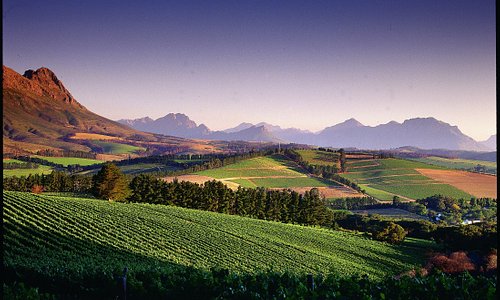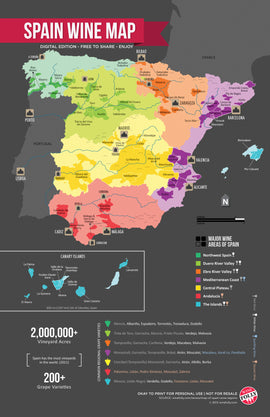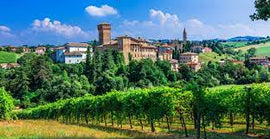The story of South African winemaking, like that of the nation itself is long, fraught, horrifying, and (hopefully) ultimately inspiring. The first bottle was produced in 1659, when Cape Town was a supply station for the Dutch East India Company, and viticulture was encouraged as a solution to scurvy. Following a brief period in the 1700s during which European royalty prized sweet wines made in the Constantia area, grape-eating birds, phylloxera, and overproduction conspired to render the quality dismal even before the international boycott during apartheid years isolated the local industry completely.
The end of apartheid found South African winemaking in a parlous spot: vineyard viruses remained rampant and the decades of international pariahdom ensured the persistence of outmoded and ineffective viticultural methods. But while the industry, like the country, still has much work to do, significant progress has been made in the years since. A strong focus on research and experimentation with regard to plantings, techniques, and varietals has produced vastly improved wine that reflects the remarkable biodiversity of the land itself. In addition, attempts to redress the wrongs of the past via ethical viticulture have made South Africa the largest global producer of Fairtrade wine and a pioneer in sustainability. This month we want to show that the Cape’s vinous heritage is worth celebrating and protecting. We love old vineyards. We love dry farming. We love bush vines. We think that “ordinary grapes” are in fact wonderful. We believe that great things are possible in the Cape, and that we are now just scratching the surface of the potential that it possesses.
Wines in South Africa are classified according to the Wines of Origin (WO) system, which divides growing regions into four classifications. They are, from large to small: geographical units, regions, districts, and wards. There are only 4 geographical units in the whole country, the largest of which, the Western Cape is the most important. It contains the oldest region, Constantia, once famous for the dessert wine Vin de Constanta, and Stellenbosch and Swartland. Our focus this month is Stellenbosch which is about 34 miles east of Cape Town. Over time, several wards have been established within the Stellenbosch district. These include: Banghoek, Bottelary, Devon Valley, Jonkershoek Valley, Papegaaiberg, Polkadraai Hills, and Simonsberg-Stellenbosch. When in Stellenbosch, you will immediately notice that the area is almost completely surrounded by mountains and hills, but it does receive some of the climate-mitigating effects of the Atlantic and Indian Oceans. The region's climate is typically Mediterranean, with hot, dry summers and cool, somewhat rainy winters. Summer temperatures range from 74 to 97 degrees Fahrenheit during the day and 50 to 61 degrees Fahrenheit at night. During the winter months, daytime temperatures range from 59 to 68 degrees Fahrenheit and nighttime temperatures dip down into the high 30s to low 40s. Rainfall averages 26 to 29 inches per year, with most rain falling during the winter season.
The white wines of Stellenbosch put the region on the map and 37% of the vineyard are white wine grapes. Sauvignon Blanc is regarded as the darling of the region but as you will soon notice, the Chardonnay produced there is also quite spectacular. For red wine, Cabernet Sauvignon is the most-planted varietal in Stellenbosch with Shiraz and Merlot tied for second place. But this month we are highlighting a more “ordinary grape”, Cinsault, one parent (the other is Pinot Noir) of Pinotage, South Africa’s signature contribution to global viticulture. The South African wine industry, which employs 290,000 people and is the 2nd largest (after citrus) agricultural exporter in the country, deserves to be in the spotlight, especially this time of year. September is the country’s official Heritage month, an annual celebration of all that makes South Africa so special. There is consequently no better time to discover South African wine.
Cheers,
The Plumpjack Team
|
Region / Country of Origin: Stellenbosch - South Africa |
About the winery: Craven Wines is a winemaking collaboration between wife-and-husband team Jeanine and Mick Craven. Mick is an Aussie and Jeanine is South African; they met in California dragging hoses in Sonoma for harvest in 2007. After both had taken to the textbooks at their respective universities, they decided to hit the road, see lots of things, work in lots of places and try and learn as much as possible from this massive wine world. After traveling across the world together for four years and learning about wines in Australia, Europe, the States and South America, the couple returned to South Africa in late 2011. They feel Stellenbosch has such an amazing array of sites and terroir, and that it is perfect for what they want to do, which is making site-specific, honest wines. About the winemaking: Mick and Jeanine are thankful to continue with this vineyard which they have worked with since 2017 called ‘Rustenhof.’ This great farm in the Faure area has an abundance of lovely Cinsault, amongst many other varietals, and Pieter Bredell, with Jeanine’s assistance and direction, farms it with great care. The block the Cravens use is a dryland, bush-vine block, only three miles from the ocean and essentially planted on granitic sand with an average wine age of 34 years which suits their winemaking style nicely. Mick emphasizes the massive difference in the vineyard since the 2017 vintage when the Cravens along with Pieter’s son, Bernhard, began farming it organically and getting as much nutrient matter into the vineyard with use of winter cover crops and chicken manure as possible. Mick calls the 2021 a “bright, fresh, and vibrant red from a grape that truly belongs in Stellenbosch.” Keeping in line with previous releases and straying from the other reds the Cravens make, the Cinsault grapes are destemmed before fermentation due to the natural low acidity and higher pH compared to other red varietals. The fruit was hand-harvested and fully destemmed with 7 days of skin contact then placed into concrete tanks. Gentle pumpovers and light punch downs are performed 1- 2 times a day throughout fermentation, and the resulting wine is pressed after a week and put back into concrete tanks for maturation for 5 months. It is bottled slightly earlier than their other red wines – after five months the wine was bottled with a light fining and sheet filtration – in an effort to express the fresher, brighter characters of Cinsaut.. Tasting Notes: A delicate cranberry and pomegranate bouquet with a bit of a rhubarb and bay leaf emerging with air. The transparency and delineation of aromas and flavors is really special. It offers red berries, black currants, rooibos tea, and a touch of white pepper and a saline element. The finish is precise and yet welcoming with chalky-edged tannins that linger. |
|
Winemaker: Wife and Husband team Jeanine and Mick Craven |
|
|
$28 bottle/ $302.40 case |
|
|
Suggested Food Pairing: Moroccan lamb, grilled vegetables, Thai curry, samosas, fresh fruit, Gruyere cheese |
|
|
Region / Country of Origin: Stellenbosch - South Africa |
About the Winery: The Glenelly Estate vineyards are situated on the southern slopes of Simonsberg Mountain. Soils are predominantly oakleaf, a form of decomposed granite with a deep layer of clay, which lends itself to making fresh, elegant, and well-structured wines. Glenelly enjoys a high percentage of cooler, eastern facing slopes. This is unusual for Stellenbosch and allows for slower, more even ripening. The Chardonnay vineyards were planted in 2000. About the winemaking: The very dry and warm weather conditions throughout the 2019 harvest resulted in healthy grapes and small berries with good intensity. Despite drought conditions, yields were excellent in the general coastal area. The flavors developed beautifully in the warm, dry conditions, adding complexity to the wine. The vintage was free of disease and vine stress, and the vines were able to carry the crop to optimum ripeness. The grapes were handpicked and hand sorted. They were then whole bunch pressed, and the juice was transferred to new and second fill of 500L blond toasted French oak barrels after a brief settling. The wine was fermented naturally and aged on its lees for 11 months. Tasting Notes: The Estate Reserve Chardonnay displays a wonderful, bright color. The nose exhibits vibrant citrus, butterscotch, lime marmalade, and toasted nuts with hints of quince and pear. The lush, creamy texture is underpinned with intense minerality, fresh lemon and lime zest, and notes of toasted almond. |
|
Winemaker: Luke O'Cuinneagain |
|
|
$22 bottle / $237.60 |
|
|
Suggested Food Pairing: Anchovy Pizza, Bluefin Tuna Tartare, Caesar Salad, Caramelized Pork
|
|





